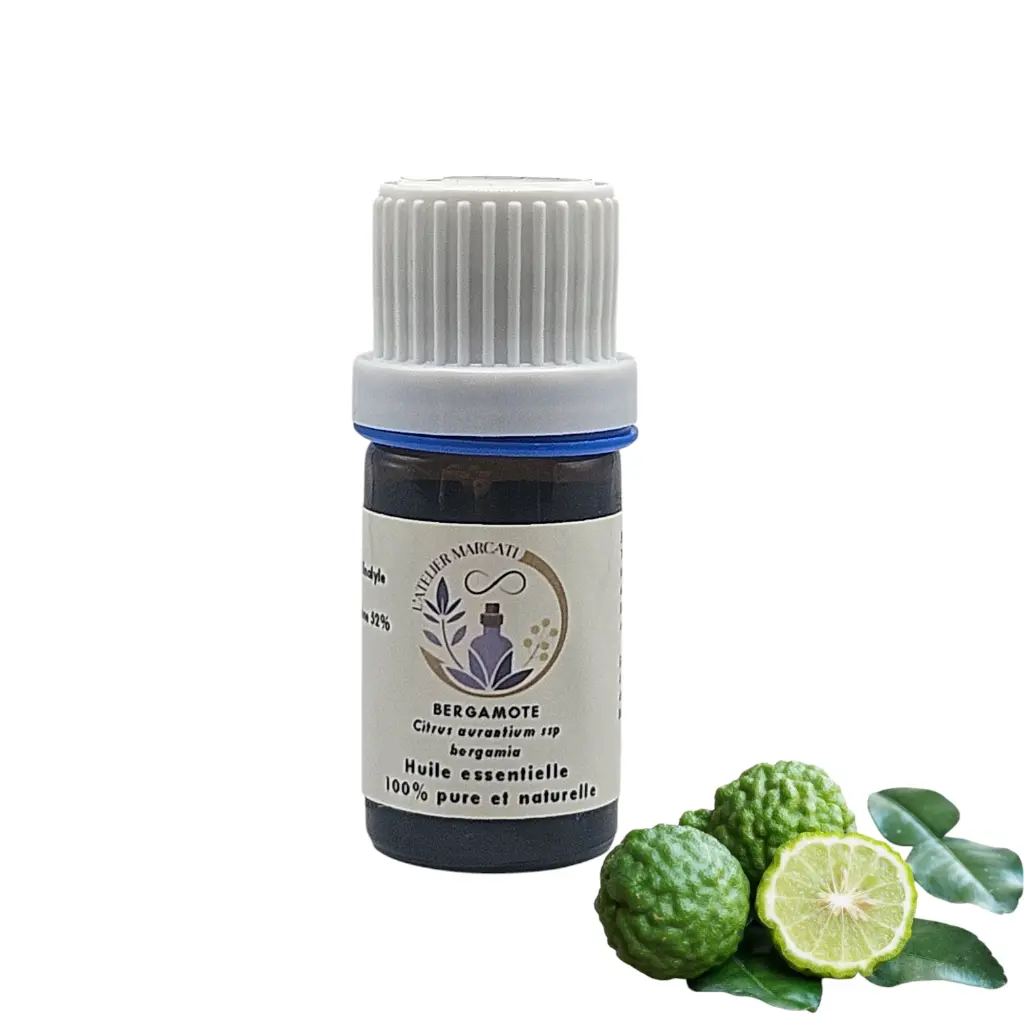Bergamot essential oil
Botanical name: Citrus Aurantium ssp. bergamia

Chemotype and indications
Identity card
Name: Bergamot
Botanical name: Citrus Aurantium ssp. bergamia
Distilled part: Zest
Botanical family: Rutaceae
Origin: Italy
Chemical composition:
- Aromatic alcohols
- Aldehydes: Citral
- Coumarins: Furocoumarins
- Esters: Linalyl acetate (29%)
- Furocoumarines
- Monoterpenes: Alpha Pinene, Camphene, Limonene
- Monoterpenols: Alpha Terpineol, Geraniol, Linalool, Nerol
- Monoterpenes
Physical properties and therapeutic indications
- Aerocolia*
- Anti-infective
- Antiseptic*
- Antispasmodic
- Bactericidal (meningococcus, staphylococcus, streptococcus)
- Spastic colitis*
- Dermatosis*
- Hemorrhoids
- Insomnia *
- Ortho and parasympathetic neuroregulator
- Neuritis**
- Malaria
- Wound
- pruritus
- Sciatica**
- Sedative**
- Digestive stimulant
- General stimulant (low dose)
Emotional, psychological properties and therapeutic indications
- Anxiolytic*
- Nerve calming*
- Calming*
- Irritability
- Mood swings
- Stress*
- Hustle
- Self-confidence (lack)
- Concentration (disorder of)
- Depression
- Mental imbalance
- Exhaustion
Additional information
Danger: Photosensitizer*** (to combat unpleasant photosensitization: Tanacetum annuum) - Risk of allergies
- Very good as an electric diffuser
Legend: * powerful,** very powerful;*** extremely powerful (power value for the associated pathology)
Reference and bibliographic source: Lily BAYER and Dr Hervé STAUB, (2013) “In-depth treatise on Phyto and Aromatherapy”, Ed. Grancher. p. 453.
INDICATIONS IN AROMATHERAPY AND THE USE OF ESSENTIAL OILS DO NOT CONSTITUTE A MEDICAL DIAGNOSIS AND DO NOT REPLACE THE ADVICE OF A DOCTOR OR MEDICAL TREATMENT!



